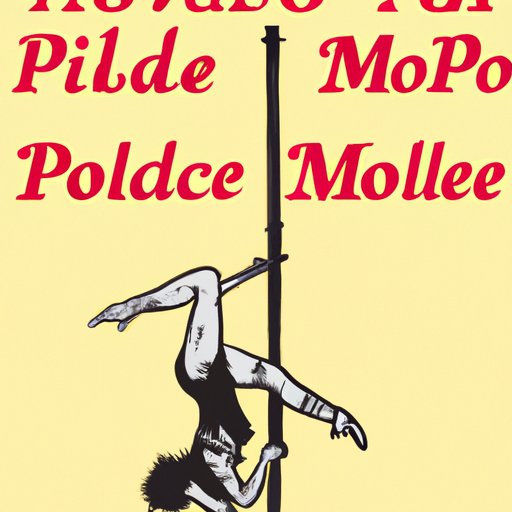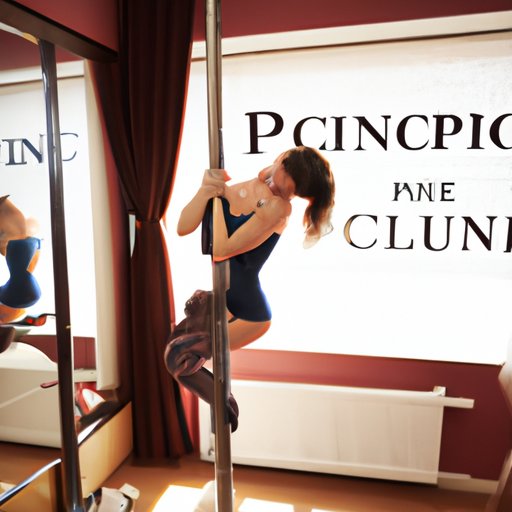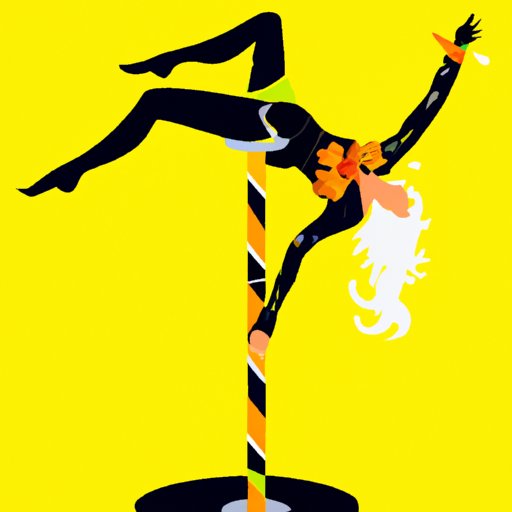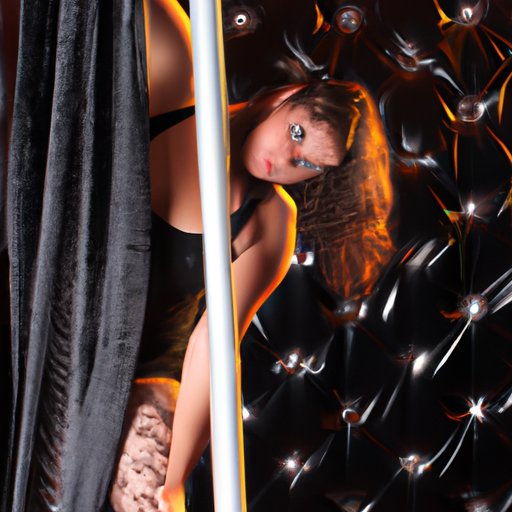Introduction
Pole dancing is an increasingly popular art form that combines strength, flexibility, and creativity. It has been gaining recognition in recent years, with more and more people taking up the activity as a way to stay fit and express themselves creatively. But what exactly is pole dancing? What are the benefits of this activity, and what challenges does it present? This article will explore these questions and more to give readers a comprehensive overview of pole dancing.

A History of Pole Dancing: How the Art Form Evolved
The history of pole dancing goes back centuries, with roots in traditional Chinese acrobatics, Indian Mallakhamba, and ancient Greek gymnastics. The modern form of pole dancing, however, first emerged in the late 19th century in traveling circuses and cabarets. Over time, it developed into a form of dance and performance art, often incorporating elements of ballet, gymnastics, and jazz. In recent years, pole dancing has gained wider acceptance and popularity, with studios popping up around the world and competitions being held on an international level.
An Introduction to Pole Dancing: What You Need to Know
Pole dancing is an art form that requires strength, flexibility, and coordination. It typically involves spinning, climbing, and holding poses on a vertical pole. Depending on the style, it can also incorporate floor work, choreography, and props. There are various types and styles of pole dancing, such as exotic, sport, and theatrical. Each type has its own distinct moves and techniques.
To get started, you’ll need to purchase or rent a pole. Most poles are made from metal and come in different sizes, so it’s important to choose one that fits your height and strength. Additionally, you’ll need to wear appropriate clothing for pole dancing, such as shorts, leggings, and tank tops. Finally, it’s important to practice safety measures when pole dancing. This includes warming up before each session, using grip aids like chalk and gloves, and listening to your body’s limitations.

Exploring the Physical Benefits of Pole Dancing
Pole dancing offers many physical benefits, including improved strength, flexibility, and coordination. According to a study published in The International Journal of Exercise Science, pole dancing can increase upper body strength, core strength, and grip strength. Additionally, the same study found that pole dancing can improve flexibility, balance, and coordination. It can also increase your cardiovascular endurance, helping you burn calories and build stamina.
In addition to increasing physical strength and endurance, pole dancing can also help improve your balance and body awareness. According to a study published in Frontiers in Psychology, pole dancing can lead to increased body awareness and self-confidence. This is likely due to the fact that pole dancing requires concentration and focus, which can help individuals become more mindful of their bodies and movements.
The Psychology Behind Pole Dancing and Its Popularity
Pole dancing offers many psychological benefits, such as improved self-confidence and body image. According to a study published in International Journal of Mental Health and Addiction, pole dancing can be an empowering experience for women, allowing them to feel strong and confident in their own skin. Additionally, the same study found that pole dancing can lead to increased self-esteem and improved body image.
The growing popularity of pole dancing can be attributed to its increasing social acceptance. No longer seen as an activity only performed in strip clubs, pole dancing is now widely recognized as an art form and exercise. Furthermore, its presence in popular culture – from movies and television shows to music videos – has helped normalize the activity and make it more accessible to the public.

An Exploration of the Cultural Significance of Pole Dancing
Pole dancing is becoming increasingly popular in popular culture, with more and more people embracing it as an art form. It has been featured in films such as Hustlers and Magic Mike XXL, and in television shows such as Glee and So You Think You Can Dance. Additionally, pole dancing has been featured in music videos from artists such as Beyoncé, Rihanna, and Nicki Minaj.
The representation of pole dancing in popular culture has helped to normalize the activity and remove some of the stigma associated with it. By seeing pole dancing in mainstream media, more people are becoming aware of the art form and its potential benefits. As a result, more people are taking up pole dancing as a way to stay fit and express themselves creatively.
Exploring the Creative Possibilities of Pole Dancing
Pole dancing is an incredibly creative and dynamic activity. It involves a variety of techniques and choreography, as well as the use of props and costumes. From spins and climbs to floor work and transitions, pole dancers have the freedom to create unique and exciting routines. Additionally, costumes and props can be used to add flair to performances and bring out the dancer’s individual style.

Examining the Challenges Faced by Pole Dancers
While pole dancing offers many physical and psychological benefits, it also presents some risks and challenges. One of the biggest risks is injury, as pole dancing can be physically demanding. It’s important to warm up and stretch before each session, and to listen to your body’s limitations. Additionally, there can be mental and emotional challenges, such as fear of performing or criticism from others. It’s important to remember that everyone has their own journey and progress at their own pace.
Conclusion
This article has provided a comprehensive overview of pole dancing, from its history and development to the physical and psychological benefits it offers. We’ve explored the different types and styles of pole dancing, the equipment needed, and the safety measures to take. We’ve also examined the role of pole dancing in popular culture, as well as the creative possibilities and challenges faced by pole dancers. Overall, pole dancing is a dynamic and rewarding activity that anyone can enjoy.
(Note: Is this article not meeting your expectations? Do you have knowledge or insights to share? Unlock new opportunities and expand your reach by joining our authors team. Click Registration to join us and share your expertise with our readers.)
